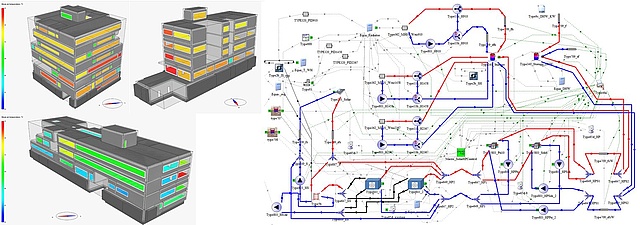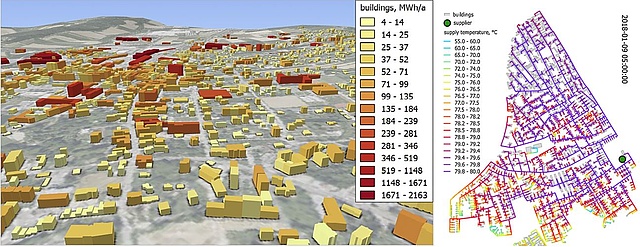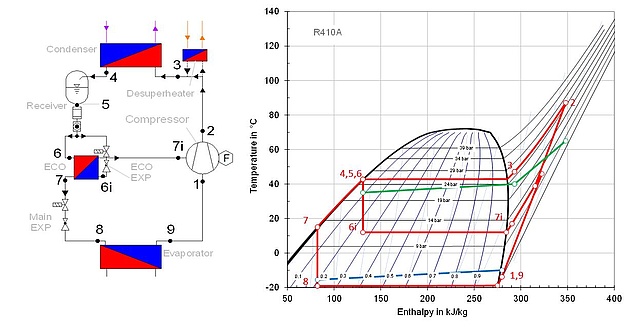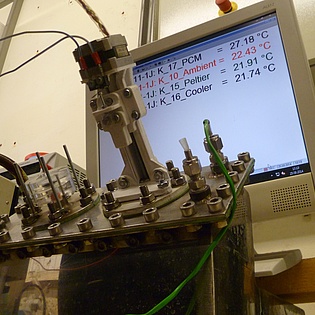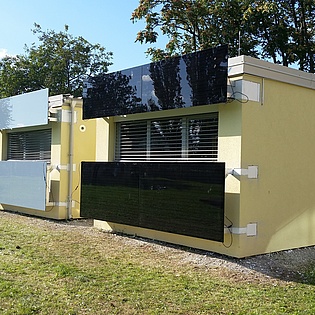R&D focus
Numerical simulation of buildings and technical building systems
A tool used in many projects is thermal plant and building simulation. With the simulation tools used (currently. IDA ICE or TRNSYS), the transient thermal behavior of buildings is mapped and analyzed in detail and geometry-based. Building technology systems are mapped according to the actual interconnection using single-component models (boilers, heat pumps, solar collectors, storage tanks, pipelines, valves, etc.) and modeled including the control system. With the help of the models, different tasks can be processed:
- Determination of heating and cooling requirements
- Calculation of room temperatures, humidity, assessment of comfort
- Evaluation of different construction variants and building designs
- Development of control strategies (ventilation, shading, building technology, etc.)
Urban Energy Concepts and Grids
One focus of the working group is the dynamic modelling and analysis of energy systems for districts of thermal supply systems. For this purpose, solutions have been developed in recent years that make it possible to consider all relevant components of district energy supply systems (energy generation, distribution grid, consumers) in the simulation in high spatial and temporal resolution.
Model development
If necessary, component models that are not available in the commercial software packages used or are not available in sufficient detail are created by the company itself. For example, a semi-physical heat pump model (Type 887), various latent heat storage models (Type 840, Type 842 and the ice storage model Type 843) have been developed for the TRNSYS software in recent years.
Experimental analyses in the laboratory and in the field
Experimental work includes the development of functional models and the metrological analysis of building technology components in the laboratory and test buildings as well as long-term measurements/monitoring on field systems.
Research Associates
Dipl.-Ing. Dr.techn.
- Phone
- +43 316 873 - 7317
- Mobile
- +43 (664) 60873 - 7317
- Fax
- +43 (316) 873 - 7305
Dipl.-Ing. Dr.techn.
- Phone
- +43 316 873 - 7814
- Fax
- +43 (0) 316 / 873 - 7305
Dipl.-Ing. (FH) Dr.techn.
- Phone
- +43 316 873 - 7313
- Fax
- +43 (316) 873 - 7305

